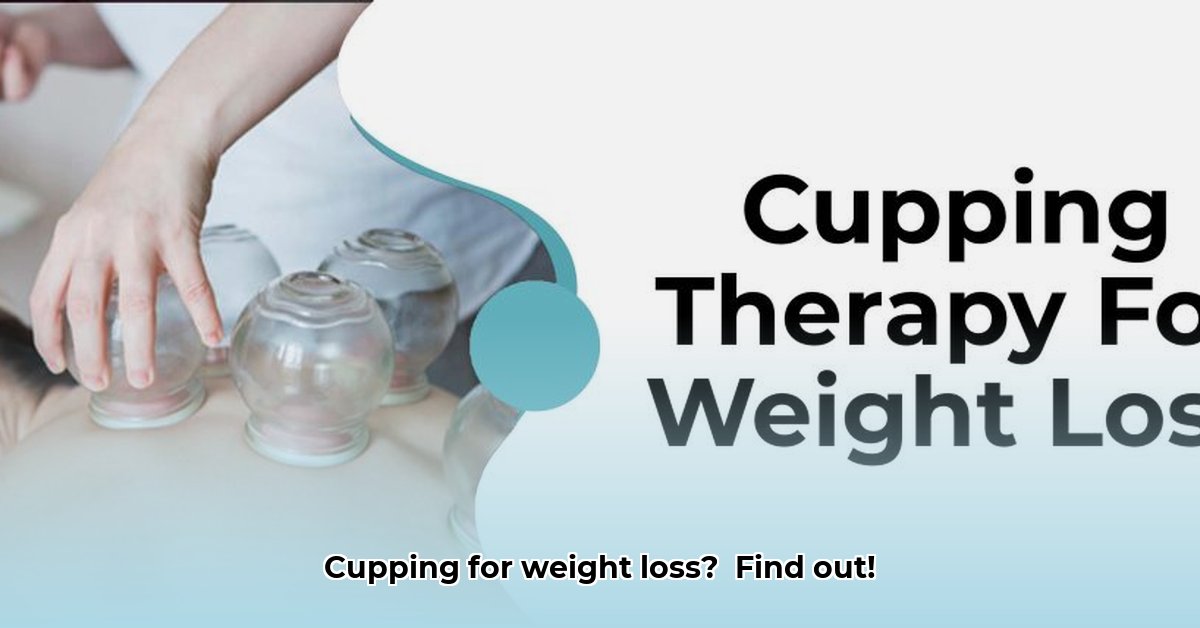
Cupping for Weight Loss: Separating Fact from Fiction
The ancient practice of cupping is experiencing a resurgence, with many touting its benefits for weight loss. Claims abound that cupping boosts metabolism, improves lymphatic drainage, and even directly burns fat. But does the science back up these enthusiastic assertions? This review examines the current evidence, separating hype from reality and providing actionable advice.
The Science Behind the Claims: A Critical Analysis
While anecdotal evidence suggests cupping may aid weight loss, robust scientific studies are surprisingly scarce. Many claims are based on traditional uses and personal experiences, lacking the rigorous testing needed to establish causality. For example, observing weight loss after a cupping session doesn't automatically imply cupping caused the weight loss. Other factors, such as dietary changes or increased physical activity, could be responsible. High-quality, controlled trials are needed to definitively determine cupping's impact on weight.
Does cupping directly burn fat? Currently, there's no conclusive scientific evidence supporting this claim. More research is essential to understand the true mechanisms at play.
Potential Indirect Benefits: A Balanced Perspective
Although direct evidence linking cupping to significant weight loss is lacking, it might offer indirect benefits that could support weight management goals. Improved blood flow, for example, may enhance nutrient delivery and waste removal. Reduced muscle soreness, commonly reported after cupping, could encourage increased physical activity. Furthermore, the relaxing effects of cupping may help manage stress, a known contributor to weight gain. It is crucial to understand, however, that these remain possibilities, not confirmed effects.
Can cupping improve lymphatic drainage? While anecdotal reports exist, further research is required to confirm this connection and its impact on weight loss.
Who Should Consider Cupping (and Who Shouldn't)?
Cupping, if considered at all, should be part of a broader weight-loss strategy, never a replacement for healthy habits.
- For individuals aiming for weight loss: Consult your physician before incorporating cupping. It may be considered as one element among many, not the primary solution.
- For healthcare providers: Inform patients about the limitations of current scientific evidence regarding cupping and weight loss. Obtain informed consent before administering cupping and closely monitor patient progress.
- For researchers: Further well-designed studies are urgently needed to elucidate cupping's effects on weight change.
Is cupping better than diet and exercise? Absolutely not. Diet and exercise remain the cornerstone of effective and sustainable weight loss.
Potential Risks and Safety Precautions
While generally safe when performed by a trained professional, cupping carries potential risks:
- Bruising: Common, usually resolving spontaneously.
- Skin irritation: Rare, preventable with proper hygiene.
- Infection: Risk minimized by using sterile techniques and a licensed practitioner.
- Burns: Caused by improper cup temperature; skilled practitioners avoid this.
Always consult a healthcare professional before starting any cupping therapy.
Actionable Steps: A Practical Guide
- Consult your doctor: Discuss your weight loss goals and whether cupping may be a suitable adjunct to your overall plan.
- Find a qualified practitioner: Verify their credentials, experience, and adherence to sterile practices.
- Establish realistic expectations: Avoid the misconception that cupping is a "magic bullet" for weight loss.
- Prioritize a healthy lifestyle: Maintain a balanced diet and regular exercise routine.
- Track your progress: Monitor any changes and share observations with your doctor.
Conclusion: A Realistic Perspective on Cupping's Role
While cupping may offer some ancillary benefits within a comprehensive weight management plan, it is not a standalone solution for weight loss. A healthy lifestyle, including balanced nutrition and regular exercise, remains paramount for achieving and maintaining a healthy weight. Much remains unknown about the relationship between cupping and weight loss; further research is needed to fully understand its role and efficacy.